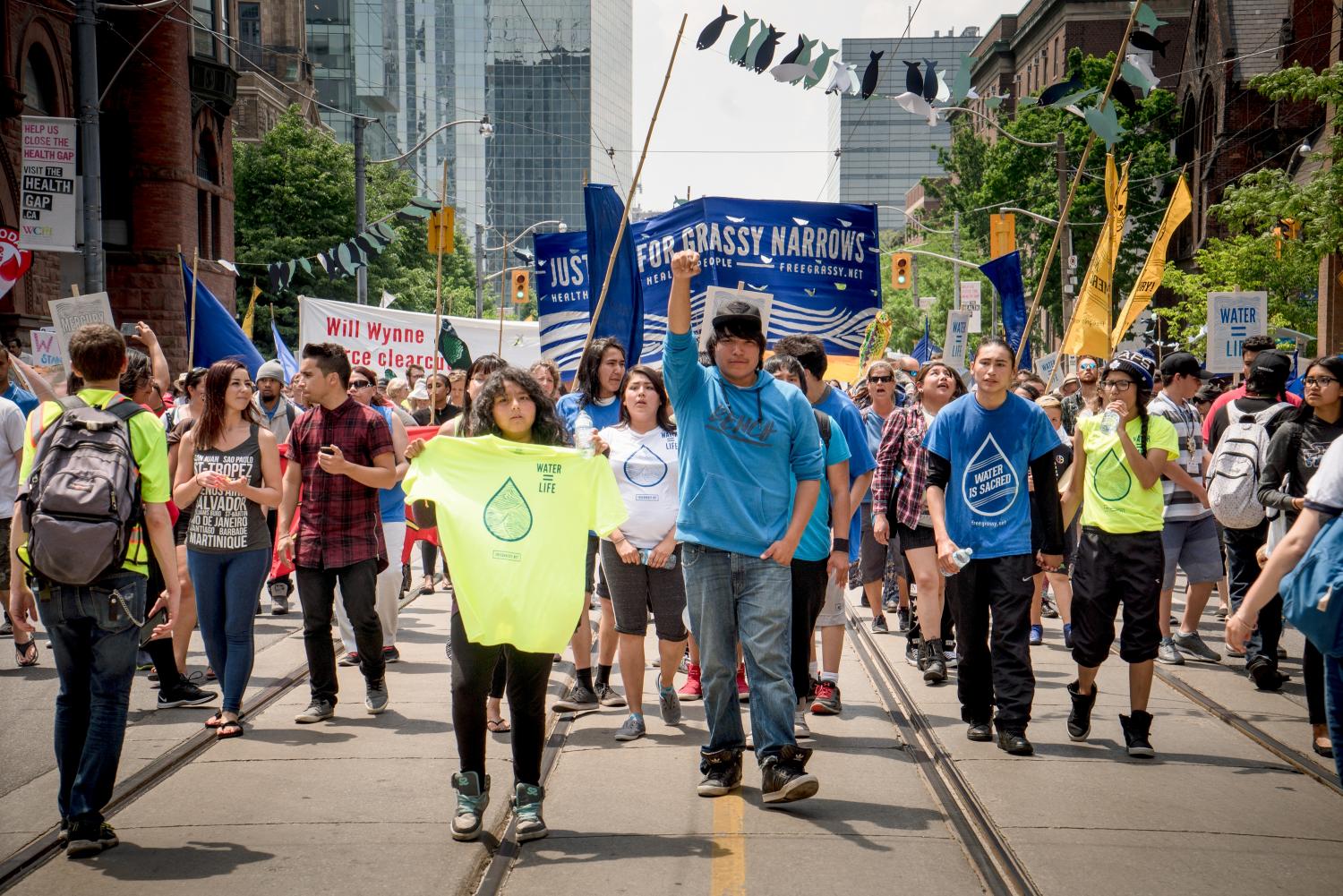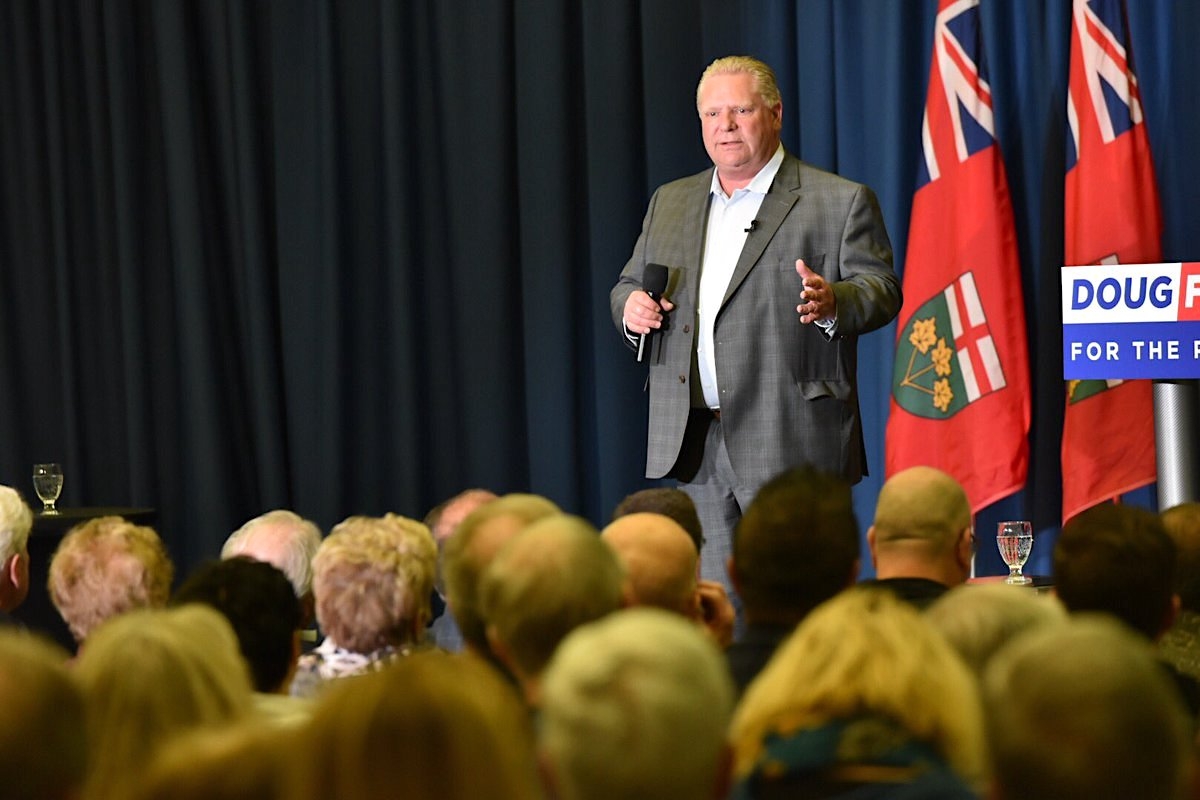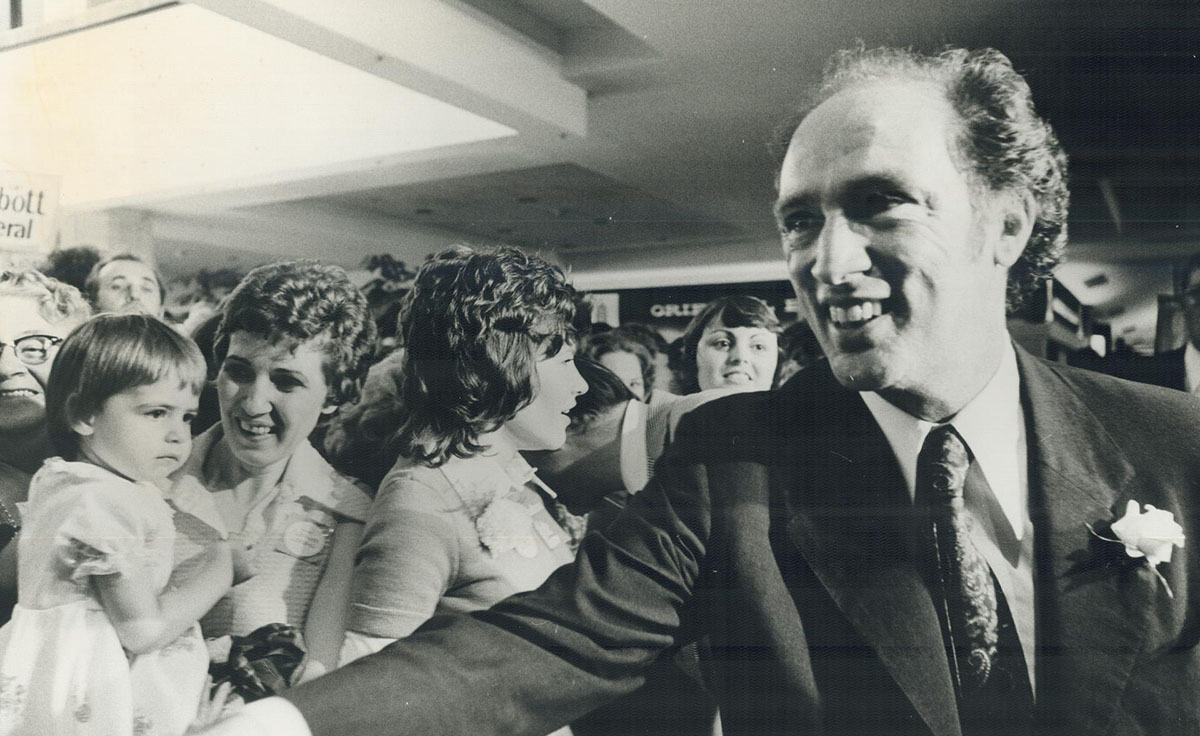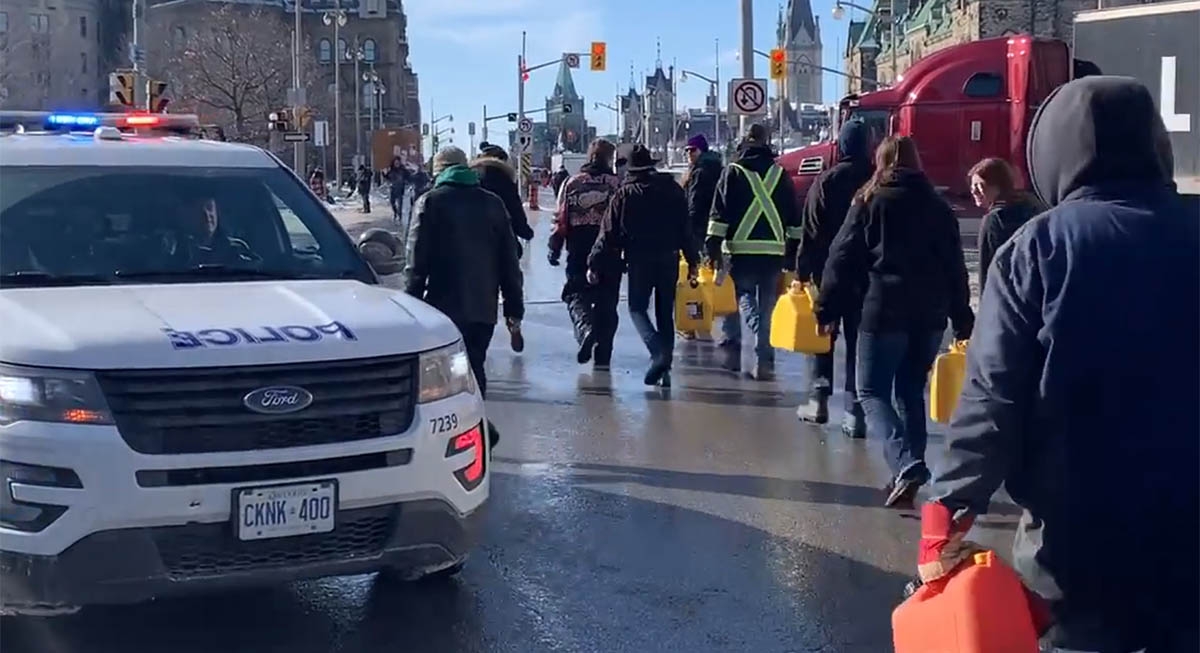
Seamus O’Regan’s Failure at Grassy Narrows Proves Systemic Racism is Alive and Thriving at Indian Affairs
Photo credit: Allan Lissner/FreeGrassy.net)
If Tembec, Papier Masson or any other pulp and paper plant illegally dumped 9,000 kilograms of mercury into the Ottawa River in the 1960s and early ‘70s and poisoned the river, the fish and put at risk the health of the people in Ottawa who live along the Ottawa River there would be hell to pay. Make no mistake about it there would have been a herculean effort to clean it up – regardless of the cost.
This is exactly what happened to the Asubpeeschoseewagong First Nation (also known as Grassy Narrows First Nation or the Asabiinyashkosiwagong Nitam-Anishinaabeg) in northern Ontario, near Kenora.
Between 1962 and 1970, the Grassy Narrows people became victims of mercury poisoning by the Dryden Chemical Company (DCC), who illegally discharged 9,000 kilograms of poisonous mercury into the English-Wabigoon River. DCC ceased operations in 1976 but their terrible legacy lives on. The fish in the river are still full of poison and the people from Grassy Narrows, who relied on the fish as a staple in their diet, are full of it too.
Once ingested, mercury never goes away. It “bioaccumulates” meaning it passes from one generation to the next, from mother to child, through the placenta.The high levels of mercury in the Wabigoon River system continue to ravage the residents and there are still mercury containers near the Wabigoon River that continue to cause health problems among the Asubpeeschoseewagong First Nation community. The mercury poisoning by the industry has spread through the Wabigoon River system to Clay Lake and Ed Wilson Landing. Additionally, chemical waste from the industry in nearby Dryden has negatively impacted the health of the Asubpeeschoseewagong and Wabaseemoong First Nation peoples.
The mercury poisoning occurred due to lax federal and provincial environmental regulatory laws. The federal government bears the overall responsibility for the poisoning. For 50 years they have avoided dealing with the problem despite sending over $16 billion per year to the department of Crown-Indigenous Relations and Northern Affairs Canada (CIRNAC).
 Federal government scientists confirmed the contamination in the 1970s and shortly thereafter the Ontario government closed the commercial fishery in the English-Wabigoon River system. Then the lucrative fishing tourism industry near Grassy Narrows collapsed, leading to mass unemployment. The community was relocated to a reserve, lured by the promise of better services such as clean drinking water. Today, there is no safe tap water in most homes at Grassy Narrows. The Grassy Narrows community continue to eat the fish from the English-Wabigoon River system because they cannot afford to obtain boats in order to fish farther away from the infected waterways or afford pricey groceries. The socio economic status of this once thriving Indigenous people has been completely obliterated by this preventable poisoning and the post-disaster government inaction. The community is now into a fourth generation of kids whose health and lives have been horribly impacted by this calamity.
Federal government scientists confirmed the contamination in the 1970s and shortly thereafter the Ontario government closed the commercial fishery in the English-Wabigoon River system. Then the lucrative fishing tourism industry near Grassy Narrows collapsed, leading to mass unemployment. The community was relocated to a reserve, lured by the promise of better services such as clean drinking water. Today, there is no safe tap water in most homes at Grassy Narrows. The Grassy Narrows community continue to eat the fish from the English-Wabigoon River system because they cannot afford to obtain boats in order to fish farther away from the infected waterways or afford pricey groceries. The socio economic status of this once thriving Indigenous people has been completely obliterated by this preventable poisoning and the post-disaster government inaction. The community is now into a fourth generation of kids whose health and lives have been horribly impacted by this calamity.
It really is Canada’s Chernobyl. The only difference being that Chernobyl was completely evacuated when nuclear radiation poisoning contaminated that area. In Grassy Narrows the mercury poisoning was not as immediate and of course it is an aboriginal community so the bureaucrats at Indian Affairs in Ottawa did what they often do – nothing.
The community has been to court many times. A disability board was established in 1986 as part of a court settlement with Ontario and Canada and the two paper companies involved in the contamination.
Neither of the companies, governments, nor the disability board has ever admitted that anyone at Grassy Narrows has been poisoned. However, they have admitted that people experience symptoms of Minamata disease. The disease is named for the Japanese town where more than 100 people died after eating fish contaminated with mercury released into a lake by a chemical plant in the 1950s.The symptoms of Minamata disease include difficulty with balance, difficulty remembering things, trouble concentrating, extreme headaches and fatigue.
Japanese scientists have been studying people at Grassy Narrows and neighbouring Wabaseemoong First Nation for decades, and in 2014 urged the federal government to provide care and financial support to every resident in the two communities affected by mercury. Nearly 75 percent of the claims sent to the board are denied, such is the uselessness of that obtuse body. By the way, the board members and their staff are all very well paid.
In 2017, the former Kathleen Wynne Liberal government in Ontario announced it would spend $85 million to clean up the mercury in the English-Wabigoon River. However, Ontario’s new Progressive Conservative government Northern Development Minister Greg Rickford said the 2017 promise became absent of any funding or operational commitment from the previous provincial Liberal government.
So basically nothing is being done.
What the Grassy Narrows people get is a lot of concern and talk from overpaid bureaucrats in Ottawa who have continuous Grassy Narrows meetings that go nowhere. Then these “public servants” collect their highly paid, fully indexed salaries with health and dental care and drive home in their SUVs to Orleans and Westboro for the weekend. They take their healthy kids to hockey and soccer. Rinse and repeat — you get the idea here.
In 2017, the Trudeau government promised to fund a medical facility for members of the Grassy Narrows First Nation who live with lasting impacts of mercury poisoning, including impaired peripheral vision, hearing and speech loss. The facility would ensure they had access to regular treatment in the community. Bureaucrats in Ottawa then spent over a million dollars on a “feasibility study” outlining costs and design ideas. They made all kinds of advance prognostications and raised expectations about how they were going to help Grassy Narrows. Indigenous Services Minister Seamus O'Regan even sent out a news advisory ahead of his visit to the community this week that said there would be a memorandum of agreement "outlining a path forward to meet the long-term health needs of the community which has been impacted by exposure to mercury."
Then O’Regan and the Trudeau government spectacularly failed the Grassy Narrows community again.
In what can only be described as the stunning ineptitude of Federal officials, Chief Rudy Turtle said that after lengthy negotiations there was no deal because the contents of the proposed O’Regan agreement were not legally binding. Chief Turtle wanted the federal government to agree to put $88.7 million — the estimated 30-year cost for the facility (according to the feasibility study) — into a trust fund for the community to ensure the project moves ahead no matter the results of the October 2019 federal election. Trudeau government officials would not agree to commit to the proposal when they had to actually pony up the money.
What became obvious during this week is that O’Regan is not running the show and is a henpecked puppet master for the senior officials in his department and at Treasury Board who are really running things. Then again, O’Regan was also pushed around by his officials and failed at his previous job at Veteran’s Affairs.
The reality for the people at Grassy Narrows and for Indigenous communities across Canada is that they continue to be forced to deal with a department managed by patronizing officials who perpetuate the subtly racist we know better corporate culture that has come to define Indigenous Affairs.This is why the Indigenous Services should be shut down and all funding transferred to Aboriginal organizations and communities across the country to run their own affairs.There is a model to do this and it would work. Middle-aged, overpaid, white people in Ottawa have proven time and again they should not be involved in making decisions about Indigenous people’s lives and health in Canada.
The federal and provincial governments are responsible for this disaster. Their lax regulations and oversight resulted in a company dumping mercury poison into a river that devastated a community destroying the lives of four generations of people. The solution is not rocket science. It requires money and commitment. First it will be a commitment to spend over $100 million in federal funding to remediate the river. Second will be commitment to put $88.7 million in to a trust fund to provide long term funding and treatment to help the community manage the devastating long term health consequences of this catastrophe.
It’s 2019 and children in Grassy Narrows still die from neurological problems due to the mercury in the water. Should this have occurred in a white or non indigenous community in Ottawa it would have been completely unacceptable. It would not have happened. I am 100 percent certain of that. The proven record of officials points to sustained systemic racism towards the people of Grassy Narrows. On any given day, of the top five things our government must deal with on their agenda, Grassy Narrows should be in the top two. How can we as Canadians allow children in our country to continue to die from a poison that destroyed a community due to government’s regulatory incompetence. Consider this: Last year Canadian taxpayers paid almost $600 million for Prime Minister Justin Trudeau to host the G7 summit. We could have funded and fixed Grassy Narrows three times over with that money and gotten a far better return. Not surprisingly, The Grassy Narrows Council has invited Prime Minister Trudeau to visit five times, but he has never accepted.
If federal parties really want to do something real and meaningful for Indigenous people in Canada they should start by committing to righting the wrong in Grassy Narrows with a fully funded, legally binding, long term agreement. And don’t let the bureaucrats get in the way of it.








